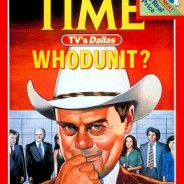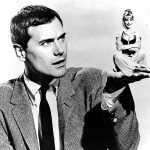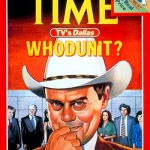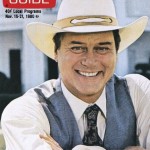Remembering Larry Hagman

Remembering Larry Hagman
Jan 02
A few weeks ago, on November 23rd of 2012, Larry Hagman died. Unless you are of a “certain age”, or are one of the twelve people who started watching the resuscitated Dallas show on TNT, the name Larry Hagman probably means very little. His mother, Mary Martin, even less (she was the original Peter Pan on TV in 1960). But in the 1980s, Hagman, in his second successful TV show, was at the center of a pop culture phenomenon that swept the world. As I will unfold below, Hagman therefore holds a truly unique place in trivia history.
While I was in my early double digits, Hagman starred with Barbara Eden in a rather sophomoric, physical farce, sitcom called I Dream of Jeannie. What young boy wasn’t dreaming of Barbara Eden in her bare midriff harem outfit? Funny thing, what with the censors of that time, while Ms. Eden’s top was somewhat low cut, her belly button was not allowed to be shown. While this show about an astronaut and his genie who lived in a bottle and had magical powers ran for six seasons, Hagman didn’t hit his peak until cast as the prototypical villain in a miniseries meant to only run for five episodes about a family of scheming oil barons and the internecine struggles to control the family wealth and power. That show, Dallas, would run for fourteen and a half seasons and catapult Larry Hagman to super-stardom. Hagman’s character, J.R. Ewing, the elder son of wildcatter turned oil baron Jock Ewing, became the character that everybody loved to hate.
Offhand, Dallas sounds like a nighttime version of a soap opera. It was, but the nation was ready for this diversion. The most intriguing member of the family was J.R., John Ross Ewing Jr. With equal dollops of venom and charm, J.R. would pursue riches, women, power, and the destruction of anything or anyone that stood in his way. But on March 21st, 1980, J.R. got his comeuppance in the form of two slugs from the pistol of an unseen assailant. That was it, the two shots heard round the World. All anyone could talk about was who shot J.R.? As Hagman himself wrote in his autobiography, Hello Darlin’, “Ronald Reagan was campaigning against Jimmy Carter, American hostages were being held in Iran, Polish shipyard workers were on strike [which eventually led to the dissolution of the Soviet Empire], and all anyone wanted to know was, who shot J.R.?” At a charity event in London, Hagman even had to politely turn down a request by the “Queen Mum” to reveal the secret. In fact, it was such a closely guarded secret that Lorimar, the show’s producer, filmed multiple endings with each of the possible shooters.
Finally, on November 21st, 1980 the seemingly unquenchable curiosity was satisfied. Before a then record breaking U.S. audience of 83 million, and an estimate International audience of 350 million viewers, it was revealed that his sister-in-law’s sister, Kristen Shepard, shot J.R. Consider that according to the 1980 U.S. Census, there were226 million Americans. That means that more than 1 of every 3 of them, myself and my wife included, were watching that episode. To date, only the final episode of M*A*S*H has ever recorded a higher audience. Throughout the summer magazine covers carried Hagman’s picture and speculated about the shooter. This was, as I said at the top, a true pop culture phenomenon.
So where is the Trivia. Well, much of what I’ve written above is trivia, but hardly Trivia Hall of Fame material. So in another pop culture reference of the period, “Where’s the Beef?” The Beef, as it were, is that the betting on who shot J.R. is the one and only time that book was made on a fictional occurrence. Bookmaking was, and is, legal in England and Las Vegas. People wanted to place bets on the outcome. Normally, bookmaking, which is a multi-billion Pound/Dollar annual business in England and Vegas, will take bets on all sorts of activities such as sporting events, political races, etc. But those are all actual occurrences. The outcome is generally considered to be multi-determinate and not open to manipulation by a single person (tell that to Arnold Rothstein who fixed the outcome of the 1919 World Series). But in the case of who shot J.R., the decision was in the hands of a small group of executives at the production company, Lorimar. So there was a market for bets. The odds were 25 to 1 in favor of J.R.’s long suffering wife, Sue Ellen. And the market proved to be huge. The betting got so enormous that the bookmakers stopped accepting bets. They were afraid that someone with knowledge of the selected scripted outcome would place large bets or that the size of the betting on any particular character would affect the final decision of the production company on who they wanted to be the shooter. So to this day, the question of Who Shot J.R. remains the only fictional event ever accepted by English bookmakers for betting. While this certainly should not be considered the crowning achievement of Larry Hagman’s celebrated life and career, it certainly is an intriguing bit of trivia.











